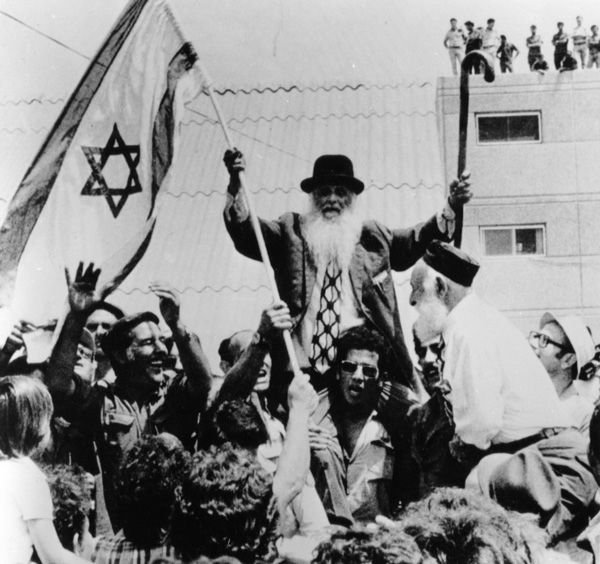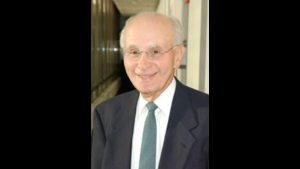40 years later, Entebbe rescue remains among Israel’s finest hours
Published June 29, 2016
It is hard to believe that it has been 40 years — equal to the time the Israelites were in the wilderness during the Exodus — that one of modern Israel’s most memorable acts took place.
It was on July 4, 1976, when the United States was celebrating its bicentennial, that our sister democracy in the Middle East launched the audacious and successful Operation Entebbe to rescue more than 100 hostages being held at the Entebbe Airport in Uganda, then ruled by the buffoon dictator Idi Amin.
Like most Americans, I was watching the TV coverage of the Tall Ships in New York’s Hudson Bay, an armada of large sailing vessels symbolically celebrating the 200th anniversary of the signing of our Declaration of Independence. Watergate was behind us, Nixon had resigned in 1974, and the benign and likable Gerald R. Ford was in the White House.
ADVERTISEMENT
The celebration was tempered among Americans, including the Jewish community, over the unfolding terrorist drama in Uganda. A week before the celebration, on June 27, an Air France passenger jet with 248 passengers was hijacked by two members of the Popular Front for the Liberation of Palestine-External Operations (PFLP-EO), under the orders of Wadie Haddadand two members of the German Revolutionary Cells, a radical terrorist group associated with the murderous Baader-Meinhof Gang.
The hijackers demanded that Israel release 40 Palestinians and other terrorists held in Israeli jails and prisons in exchange for the hostages.
The Air France flight originated in Tel Aviv with a Paris destination but was diverted after a stopover in Athens via Benghazi to Entebbe, the main airport in Uganda.
ADVERTISEMENT
Dictator Amin, who at one time had cordial relations with Israel, turned against the Jewish State and openly sided with the hijackers. He was driven in his black Mercedes to Entebbe, where he welcomed the hijackers.
The hostages were moved from the aircraft to a unused airport building. The hijackers cruelly separated all Israeli and non-Israeli Jews from the rest of the passengers, forcing them into a separate room. The German-accented European terrorists called out the “Jewish-sounding names” in a chilling reminder of how Jews were “separated” in the German death camps during World War II.
As the frightening drama played out over the next few days, 148 non-Israeli hostages were released and flown out to Paris. More than 100 people (mainly Israelis, plus the Air France crew of 12) remained as hostages and were threatened with death if the terrorists’ demands were not met.
Just as the Israeli government decided on the eve of the 1967 Six-Day War not to sit back and wait for a massive raid on the Jewish State, a decision was made to launch one of the most daring raids in all of military history.
Acting on information from Mossad, the Israeli intelligence agency, that the terrorist threat must be taken seriously, plans were developed for the historic and high-risk rescue mission.
The operation, which required seven days of intensive planning, took place at night. Israeli transport planes carried 100 commandos more than 2,500 miles to Uganda.
The rescue was completed in about 90 lighting-fast minutes. One hundred and two hostages were rescued. Israeli Prime Minister Yitzhak Rabin and Defense Minister Shimon Peres, along with top Israeli military officers, were praised for their leadership under tremendous and conflicting local and international pressures.
Tragically, the Israeli unit’s commander, Lt. Col. Yonatan “Yoni” Netanyahu, brother of future Prime Minister Benjamin “Bibi” Netanyahu, was killed in the raid. Five other Israeli commandos were wounded. Yoni Netanyahu was only 30 years old at the time. He was buried with full military honors on Mount Herzl on July 7, 1976.
In the course of the rescue operation, Israeli commandos fooled the hijackers and Ugandan soldiers by driving an exact replica black Mercedes to the Entebbe Airport with a commando disguised as Amin. They fell for the ruse.
After the operation, the Israelis finished evacuating the hostages, loaded Yoni Netanyahu’s body into one of the planes and left the airport for the 2,500-mile trip back to Israel.
All of the hijackers on the scene and more than 30 Ugandan soldiers were killed.
One of the 106 hostages, Dora Bloch, 75, a British Jew, was apparently murdered by Ugandan soldiers before the rescue operation. Bloch had been taken to a Uganda hospital after choking on a chicken bone; her remains were later recovered from a wooded area.
Of the remaining 105 hostages,three were killed and about 10 were wounded. The 102 rescued hostages were flown to Israel via Nairobi, Kenya, soon after the raid.
It is not surprising that the raid on Entebbe inspired three feature-length films, but the retelling with scripted actors could notmatch the drama of the actual mission.
Among the Jewish community in St. Louis, there was tremendous jubilation over the success of the Entebbe rescue. It was perhaps the greatest surge of pride in the aftermath of the very traumatic and costly Yom Kippur War three years earlier.
By coincidence, St. Louis Jewish businessman and community activist Milton Movitz was in Israel as the hostage rescue was unfolding and witnessed the return of some of the commandos to heroes’ welcomes in the Jewish State.
Movitz telephoned the Jewish Light from Israel to describe the return the commandos in the lobby of the Diplomat Hotel in Jerusalem.
Movitz’s account was printed as the lead story on Page 1 of the July 7, 1976, issue of the Jewish Light, headlined, “Rescue Boosts Israeli Morale.”
Movitz quoted one of the “incredibly young, handsome soldiers” who had taken part in the rescue as saying, “Happy Birthday to America.”
Indeed, the amazing rescue at Entebbe was a most welcome bicentennial gift to America, to its sister democracy in Israel and to freedom-loving people around the world.















